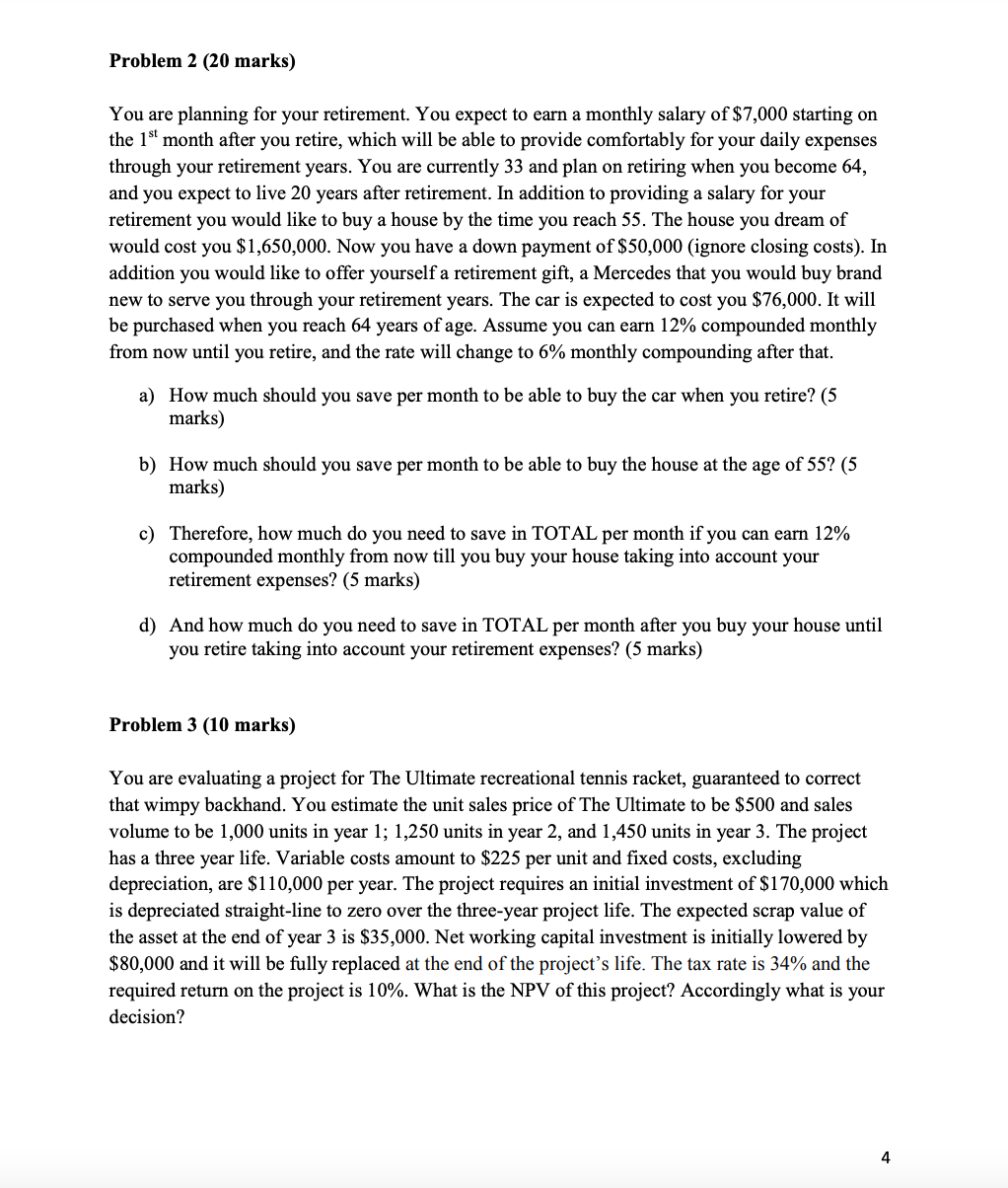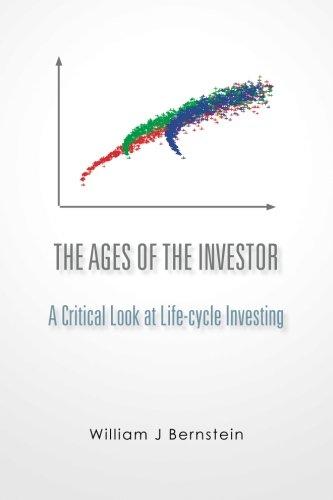
Problem 2 (20 marks) You are planning for your retirement. You expect to earn a monthly salary of $7,000 starting on the 1st month after you retire, which will be able to provide comfortably for your daily expenses through your retirement years. You are currently 33 and plan on retiring when you become 64, and you expect to live 20 years after retirement. In addition to providing a salary for your retirement you would like to buy a house by the time you reach 55. The house you dream of would cost you $1,650,000. Now you have a down payment of $50,000 (ignore closing costs). In addition you would like to offer yourself a retirement gift, a Mercedes that you would buy brand new to serve you through your retirement years. The car is expected to cost you $76,000. It will be purchased when you reach 64 years of age. Assume you can earn 12% compounded monthly from now until you retire, and the rate will change to 6% monthly compounding after that. a) How much should you save per month to be able to buy the car when you retire? (5 marks) b) How much should you save per month to be able to buy the house at the age of 55? (5 marks) c) Therefore, how much do you need to save in TOTAL per month if you can earn 12% compounded monthly from now till you buy your house taking into account your retirement expenses? (5 marks) d) And how much do you need to save in TOTAL per month after you buy your house until you retire taking into account your retirement expenses? (5 marks) Problem 3 (10 marks) You are evaluating a project for The Ultimate recreational tennis racket, guaranteed to correct that wimpy backhand. You estimate the unit sales price of The Ultimate to be $500 and sales volume to be 1,000 units in year 1; 1,250 units in year 2, and 1,450 units in year 3. The project has a three year life. Variable costs amount to $225 per unit and fixed costs, excluding depreciation, are $110,000 per year. The project requires an initial investment of $170,000 which is depreciated straight-line to zero over the three-year project life. The expected scrap value of the asset at the end of year 3 is $35,000. Net working capital investment is initially lowered by $80,000 and it will be fully replaced at the end of the project's life. The tax rate is 34% and the required return on the project is 10%. What is the NPV of this project? Accordingly what is your decision? 4







